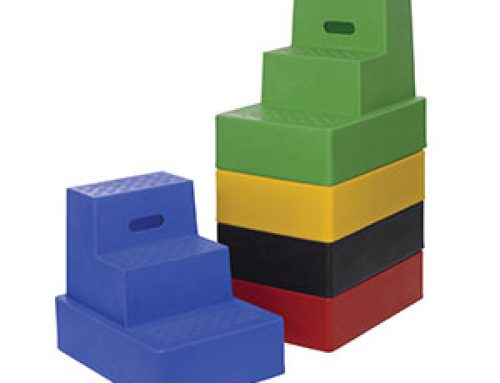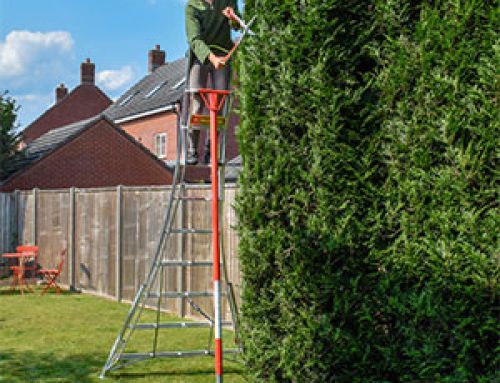Using the right tools and equipment for the job should be, in part, common sense. You wouldn’t use a 30-foot extension ladder to change a lightbulb (well – you shouldn’t!) and  you wouldn’t use a three-tread step ladder to clean the guttering. For one employer in Leicestershire, the wrong choice of equipment led to the injury of a worker and a £4,000 fine, plus costs.
you wouldn’t use a three-tread step ladder to clean the guttering. For one employer in Leicestershire, the wrong choice of equipment led to the injury of a worker and a £4,000 fine, plus costs.
A builder had been subcontracted to repair wooden window frames on a property that the employer, Peter Steans, was working on. He was using a ladder, extended to just under the window frame on which he was working, to repair the window beading. Once he had climbed the ladder, he dropped a piece of the bead and started descending the ladder to pick it up. As he climbed down the ladder he fell to the paved area below, smashing through a workbench.
The man suffered head injuries and fractures to the spine, pelvis & wrist and was unable to climb stairs or walk unaided for five months. He also cannot return to work as a builder.
The Health and Safety Executive (HSE) investigated the incident and found that the accident could have been prevented, had better equipment been used. They had found that a suitable scaffold tower was on the site and decided this should have been used instead of the ladder, thereby removing the risks associated with working up a ladder.
 The moral of the story for employers is to always fulfill your duty to ensure the correct equipment is used for each job. The safety of casual workers and subcontractors on the work site is the responsibility of the person in overall control of the job. Proper training and inductions on each site can ensure that even people only working on site for a single day are made aware of the equipment available and how it is to be used.
The moral of the story for employers is to always fulfill your duty to ensure the correct equipment is used for each job. The safety of casual workers and subcontractors on the work site is the responsibility of the person in overall control of the job. Proper training and inductions on each site can ensure that even people only working on site for a single day are made aware of the equipment available and how it is to be used.
Some pointers for correct ladder use:
- Always ensure the ladder is the correct type for the job and the correct size. The working length of a ladder is not the same as the actual length of the ladder: the top three rungs should not be used to climb on
- Do not use ladders as scaffold props unless the ladder is specifically designed to be used in this way
- Don’t use a stepladder as a straight ladder (i.e. do not lean closed step ladders against walls in order to use them as a straight ladder): the feet are not designed to be stable in this position
- Never place a ladder on top of boxes, furniture or anything else in order to gain height. Instead, use the correct length of ladder
- Ensure the ladder is in working condition before using it. Don’t use broken or damaged ladders.
- Stepladders should be fully opened and the spreader braces locked before use
- Extension and straight ladders should be set up with a 4:1 ratio (75 degree angle) between the wall and the ground (that’s four feet up the wall, one foot out from the wall)
- Extension and straight ladders should be resting against a flat, stable surface at the top and the bottom should be on flat, firm ground that poses no slipping risk. Measures can be taken to correct uneven ground and minimise the risk of the feet slipping, as there are plenty of affordable accessories on the market that can save lives and prevent injury
- Make sure any ladder that is set up near a doorway is properly guarded and that the door is locked. It is very easy to knock someone off a ladder if the door behind it is opened
- When using power tools up a ladder, use only double insulated ones and preferably those that have been tested according to industry standards. This is especially important when using a metal ladder.






Leave A Comment
You must be logged in to post a comment.